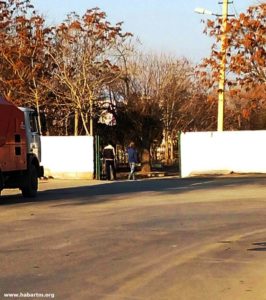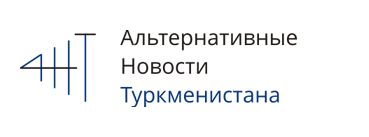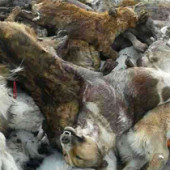 On 14 and 15 January 16, 2017 the Ashgabat municipal community service held another round of its “extermination campaign,” killing the local domestic animals – this time at the old Russian cemetery in the Khitrovka district of the capital.
On 14 and 15 January 16, 2017 the Ashgabat municipal community service held another round of its “extermination campaign,” killing the local domestic animals – this time at the old Russian cemetery in the Khitrovka district of the capital.
According to local activists, animal slaughterers arrived around 4 p.m. in the community service trucks (license plates 5414 and 2763 AGE). Armed with pinch-bars and axes, they entered the cemetery and started pursuing the dogs.
“They tore apart a den with six puppets and slashed all of them,” – one of the witnesses reported.
When several people returning from an evening church service tried to stop the killings and make videos of it, the slaughterers called the police. Two cars with law enforcement officers appeared, and the witnesses, with children among them, had to withdraw from the scene for their own safety.
The community services killed nearly 20 dogs, including the puppets on the photo, and other animals were heard howling inside their cars, witnesses told to ATN.
According to Article 178 of the Turkmenistan Administrative Code, animal cruelty and torture is punishable by a warning or a fine equal to half the minimum wage. Yet, community service workers in Ashgabat and other regions of Turkmenistan remain unpunished, as they act under direct order from the local administration. It is known that they are even paid extra for every animal killed.
Mass killing of animals, usually held under the guise of infectious diseases control, have become a regular part of cleaning campaigns organized before the national celebrations where the head of state Gurbanguly Berdymuhamedov is expected, as well as before the Asian Games to be held in September.
Local activists have repeatedly submitted written complaints to the local authorities and international organizations, such as the Brigitte Bardot Foundation, to put an end to this barbaric extermination of cats and dogs in Turkmenistan. However, Ashgabat officials ignore these complaints, while foreign foundations refer to the lack of funding for the region.





